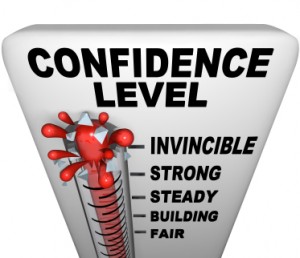
Assess Yourself and See!
What attributes do all super trainers share, no matter how different their styles?
Rate yourself from 1 (I’m not so great at this) to 3 (I do this every time!) on the guidelines below. Then read the strategies, which will transform YOU into a Super Trainer.
Three Essential Attributes of Super Trainers
1. Content Knowledge
Of course, this comes first. If you don’t know your subject, you shouldn’t be training it. However, you DON’T have to know every last detail before you’re ready to train.
My self-rating on Content Knowledge:
1 2 3
low high
2. Willingness To Have Fun
This one’s a potential danger zone. Some trainers have so much fun themselves that they remain oblivious to the participants’ needs, insights, and potential contributions.
Having fun doesn’t mean you are able to toss out jokes. Willingness to have fun means relaxing WHILE you exude dynamism and energy. It means connecting with the participants WHILE you focus on content and time management. It means enjoying the participants WHILE retaining your unique role as trainer.
My self-rating on Willingness to Have Fun:
1 2 3
low high
3. Use of a Well-Structured Training Design
Have you ever wondered about the source of the following issues?
- Bad marks on your training evaluations (excluding comments about cold coffee or overly warm training rooms)
-
Participant hostility, side conversations or passive-aggressiveness
- Lack of participation
- People sleeping
The invisible culprit is often how the session is designed, not the presentation skills of the trainer. Design affects everything related to the training.
Training design is training architecture. A badly–designed course will sag, fracture, and even crush the best trainer.
My self-rating on Use of a Well-Structured Training Design:
1 2 3
low high
Strategies to Pump Up Your Training Skills
Even if you rated yourself high on the preceding attributes, these strategies will enhance your training:
1. Content Knowledge
Ensure that you have included only the absolute “MUST-KNOW” material into your training session. When you develop the session, test each part of the training by asking, “is this a ‘must-know’ piece of information, or is it merely ‘nice to know?’ Toss the ‘nice to know’ pieces. Remember-less is more.
If a participant asks you something you cannot answer, remember that it is OK to say “I don’t know. Let me find out and get back to you,” but only if you really will follow up. Meanwhile, acknowledge that a participant in your group may well have the information you lack. Don’t be afraid to ask. Doing so helps you build community with your participants.
2. Willingness To Have Fun
The more prepared you feel with your content and training structure, (attributes #1 and #3,) the more fun you’ll have.
But you must also examine your beliefs about people. Do you feel they are mainly a drag, or do you find them interesting and quirky? Do you like yourself? Are you accepting or judgmental? Your underlying beliefs about yourself and others either boost or impede your level of relaxation and ability to have fun in the training role.
It’s worth your time to examine your philosophy of teaching. Do you buy into a “boot camp” mentality? Alternatively, do you feel oversensitive to students’ needs? Heighten your awareness of your philosophy and actions, and then make changes if needed. Fun will follow!
3. Use of a Well-Structured Training Design
Here are three guidelines to ensure your training architecture is sound:
- Never organize your training session using PowerPoint.
- Carefully and thoughtfully develop learning outcomes. Organize all your content to achieve them.
- No matter how experienced a trainer you are, take a basic class in course design. It may challenge the way you think about training!
It’s always good to re-visit the essentials; all Super Trainers do. Integrate these Top Three into your training, and you’ll find yourself among the greats!
Want more tips to improve your trainings? Learn how Guila Muir’s Instructional Design Workshop can help you to create powerful, effective training sessions.
See free newsletters full of tips and techniques for improved training: http://archive.constantcontact.com/fs071/1101469784148/archive/1101880413533.html








 by Guila Muir
by Guila Muir
 by Guila Muir
by Guila Muir